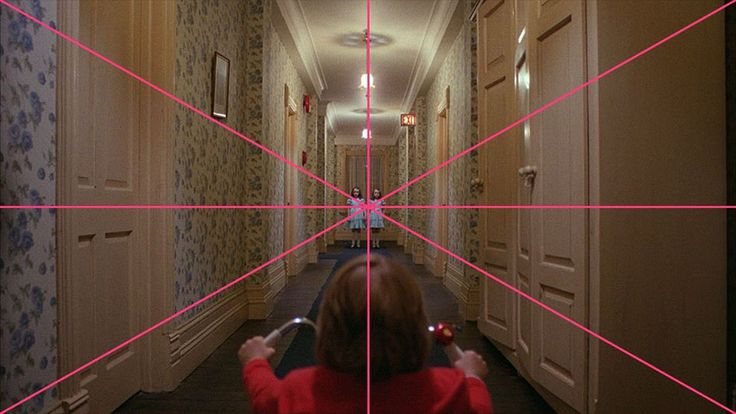What is Above The Line in Film? Explained
In the realm of film production, the terms “above the line” and “below the line” represent essential distinctions that significantly influence the film industry, impacting everything from budgeting to narrative structure.
This discussion will elucidate the concept of “above the line,” providing insights into its definition, origins, and the key creative roles it encompasses, including directors, producers, and writers. Additionally, we will explore the influence of casting directors and talent agents in shaping the final film.
Additionally, the significance of these positions will be examined of budgetary considerations, creative control, and the involvement of production companies, as well as the career trajectories leading to these roles. The ongoing debates surrounding representation, diversity, and industry standards within the film industry will also be addressed.
This analysis aims to highlight that “above the line” extends beyond mere budgetary terminology; it serves as a critical component in the art of crafting compelling narratives for the screen, influencing audience engagement and creative input.
The Concept of Above The Line in Film

The concept of Above the Line (ATL) in film refers to the key creative roles that are essential to the development and production of a film project, including screenplay development and talent management. These positions typically include the director, producer, and screenwriter, who play a crucial role in shaping the artistic vision, narrative structure, and production design of the film.
A comprehensive understanding of ATL is imperative for anyone involved in the film industry, as it underscores the significance of these creative contributors and their collaboration with the film crew within the overall production process.
The responsibilities associated with these roles are multifaceted and are vital during the project management and financial planning stages of film production, ultimately influencing both the film budget and production value, as well as the film’s distribution and marketing strategy.
Definition and Origins
Above the Line (ATL) refers to the segment of a film budget that encompasses the costs associated with key creative positions, including the director, producer, screenwriter, and strategic input from a music supervisor. These roles significantly influence the film’s artistic vision and narrative development, as well as the overall production workflow.
This aspect of budgeting is critical during the initial stages of production, including pre-production and principal photography, as it encompasses the creative decisions that will ultimately shape the film’s outcome. Originating from the traditional structure of film accounting, where expenses were categorized to differentiate influential creative talent from below-the-line labor, ATL serves as a fundamental framework for managing the artistic direction of the project and securing the acquisition of the necessary rights.
For example, a director’s distinct interpretation of the script can profoundly affect character arcs and the overall tone, utilizing specific cinematography techniques, while a screenwriter’s vision ensures that the narrative remains both engaging and coherent.
Ultimately, these roles are essential for crafting a cohesive story that resonates with audiences, informs the creative strategy of the entire production, and aligns with current industry trends and audience demographics.
Above The Line vs. Below The Line

In the film industry, it is crucial to differentiate between Above the Line (ATL) and Below the Line (BTL) as these terms classify the roles and costs associated with various stages of film production, from script development to post-production.
Above the Line refers to the key creative positions, whereas Below the Line encompasses the technical and operational elements of filmmaking, including the production crew, line producer, and various support roles essential for completing a film.
This distinction is significant for budget allocation, project management, and a comprehensive understanding of film financing, which includes navigating contractual agreements and financial forecasting.
Differences and Roles
The primary distinctions between Above the Line and Below the Line roles in film production are rooted in their respective functions, responsibilities, and influence on the overall production value, budget management, and production timeline.
Above-the-line positions refer to key creative roles that play a vital part in shaping the film’s vision, including collaboration with the art director to ensure aesthetic cohesion. This includes the director, producer, and principal actors, whose decisions greatly affect the narrative direction, production design elements, and aesthetic style of the project. These roles often determine the overall tone of the film, its reception by the audience, and its critical reception at film festivals and in film reviews.
In contrast, Below the Line roles consist of a diverse array of technical and operational crew members, such as cinematographers, sound engineers, editors, and script supervisors. Their practical expertise is crucial in ensuring that the creative vision is effectively realized on screen, adhering to industry standards and ensuring high production value.
While Above the Line focuses on storytelling and character development, Below the Line personnel are responsible for managing the logistics, equipment, and artistry that support the production process, including post-production and visual effects. Both categories are essential for creating a successful film that resonates with audiences, adheres to budget constraints, and achieves successful distribution and box office performance.
Key Above The Line Positions
Key Above-the Line positions in film encompass crucial roles such as the director, producer, screenwriter, and casting director, each contributing distinctly to the artistic vision and overall management of the project.
The director is responsible for overseeing the creative elements of the film, ensuring that the artistic vision is effectively translated into visual storytelling, utilizing cinematic techniques that enhance audience engagement.
Meanwhile, the producer manages the project from a logistical perspective, which includes budget allocation, talent representation, rights acquisition, and film financing.
The screenwriter develops the screenplay, forming the foundational narrative structure and character development of the film, adhering to genre conventions and audience expectations.
Together, these roles are essential to the film production process, guiding the project from pitch meetings through to distribution and viewer experience.
Director, Producer, and Writer
The director, producer, and screenwriter occupy crucial above-the-line roles in film. Each is responsible for distinct creative and logistical dimensions that are essential to the film’s success, impacting both creative collaboration and financial planning.
The director is often regarded as the visionary behind a film, guiding the actors’ performances, making casting choices, and shaping the overall visual narrative through carefully considering camera angles and shot composition. In contrast, the producer oversees the project’s budget and schedule, ensuring that the film remains within financial constraints, securing the necessary resources for production, and managing stakeholder involvement.
A pertinent example of this can be seen in the work of Christopher Nolan on ‘Inception,’ where his directorial vision not only crafted an intricate storyline but also necessitated innovative special effects, complex narrative structure, and meticulous production design. Conversely, the screenwriter, as demonstrated by Quentin Tarantino’s iconic dialogue in ‘Pulp Fiction,’ is tasked with creating the script that serves as the foundation for both the director and producer, contributing to the film’s narrative depth and audience appeal.
This script establishes the narrative arc, character development, and audience appeal that ultimately captivates the audience and influences the film’s box office success.
The Importance of Above The Line in Film Production

Understanding the significance of Above the Line roles in film production is essential, as these positions directly affect the film’s budget, production value, and the creative control exercised by the primary creators over the project, influencing both the marketing strategy and distribution approaches.
Above the Line roles often represent the public face of the film, influencing audience engagement, marketing strategies, and box office performance, which ultimately determine a film’s success within the competitive landscape of the film industry.
These roles are pivotal in shaping both the narrative and visual storytelling, guiding the film from concept to completion, and are critical for effective project management, securing financing for the film, and ensuring alignment with industry networking and film awards.
Impact on Budget and Creative Control
The influence of Above the Line roles on the film budget and creative control is significant, as these essential positions often determine the financial framework, creative team dynamics, and artistic direction of a film project.
In terms of effective production, the allocation of funds for directors, producers, and writers is crucial; their creative vision necessitates not only artistic intuition but also financial acumen, navigating intellectual property concerns, and entertainment law.
The management of these roles not only shapes the narrative but also addresses the logistical challenges that may arise during filming, such as production challenges and the coordination of the shooting schedule. Given the potential obstacles—ranging from casting issues to location challenges—implementing effective funding strategies and utilizing co-productions becomes imperative.
By diversifying revenue sources such as crowdfunding, pre-sales, and international markets, studios can achieve a balance between creative expression and budget management. Additionally, fostering strong communication among Above the Line team members is essential to ensure alignment with the project’s vision, ultimately contributing to a more efficient production process and successful film festival entries.
How to Become Above The Line in Film

Achieving Above the Line status in the film industry necessitates a well-defined career path and the cultivation of essential skills, as these roles require a blend of creative talent, industry expertise, and effective professional networking, often facilitated by workshops and mentorship.
Individuals aspiring to these positions typically commence their journey by acquiring experience across various film-related roles, including production design or talent negotiation, gradually refining their abilities as directors, producers, or screenwriters.
It is imperative to develop a robust portfolio, foster a professional network, and gain insights into film history and auteur theory to secure opportunities and successfully navigate the competitive landscape of the film industry.
Career Path and Skills Required
The career trajectory toward achieving Above the Line status in the film industry necessitates acquiring experience in various film roles and cultivating specific skills, including the understanding of production design elements and sound design, that are critical for success in this field.
Aspiring professionals typically commence their journeys in entry-level positions, such as assistants or production interns, allowing them to observe the complexities of filmmaking firsthand, including project oversight and creative collaboration.
Education from reputable film schools or programs can provide essential foundational knowledge in storytelling, cinematography, and production management, enhancing understanding of editing styles; however, practical experience is equally invaluable for effective talent representation and distribution rights negotiation.
Positions such as director, producer, and screenwriter each demand a mastery of distinct facets of creative collaboration, resource allocation, and strategic vision. For example, strong leadership and communication skills are vital in talent management, facilitating seamless collaboration among diverse teams.
Ongoing professional development, including workshops and networking opportunities, enables individuals to refine their skills and adapt to the continually evolving landscape of the industry.
Controversies Surrounding Above The Line Positions
Controversies regarding Above the Line positions in the film industry frequently center on matters of representation and diversity. These roles are critical as they significantly influence the creative direction and inclusiveness of film projects.
Issues of Representation and Diversity
Issues of representation and diversity within Above the Line roles are critical topics in the film industry, as they significantly influence the narratives presented and the voices reflected in cinema.
Recent studies indicate that while there has been a modest increase in diversity, substantial gaps remain. For example, a 2023 report from the Annenberg Inclusion Initiative reveals that women and people of color continue to occupy a disproportionately low percentage of directorial and writing positions, despite constituting nearly 50% of audience demographics.
Furthermore, films that embrace diverse storytelling have been shown to positively impact box office performance and audience engagement, demonstrating that diversity in creative leadership not only enriches the narratives but also aligns with viewer preferences.
Highlighting notable success stories, films such as ‘Black Panther’ and ‘Crazy Rich Asians’ have illustrated the commercial viability of inclusive filmmaking, thereby paving the way for broader acceptance and meaningful change within the industry.
Frequently Asked Questions
1. What is Above The Line in Film? Explained
Above The Line in film refers to the budget categories that primarily involve creative and administrative aspects of a film, such as the script, cast, and director. It is the section of the budget that is usually allocated to the most recognizable and essential elements of the film.
2. What are some examples of above-the-line expenses in film?
Some examples of above-the-line expenses include the salaries of the lead actors, director, and writer, production fees, and above-the-line crew salaries, such as the producer and casting director.
3. Why is Above The Line important in film budgeting?
Above The Line is crucial in film budgeting because it determines how much money will be allocated to the essential elements of the film. These elements are often what attract audiences and can greatly impact the success of a film.
4. How does Above The Line differ from Below The Line in the film?
Above The Line and Below The Line are two categories used in film budgeting. While Above The Line involves creative and administrative aspects, Below The Line refers to the technical and physical aspects of production, such as equipment, props, and set design.
5. Who is typically included in Above The Line expenses?
Above The Line expenses usually include the key creative and administrative members of the film, such as the director, writer, and lead actors. However, the specific individuals included may vary depending on the production and budget.
6. How does the above-the-line budget affect the overall budget of a film?
The above-the-line budget can significantly impact the overall budget of a film, as it often requires a significant portion of the total budget. If the above-the-line budget is higher, it may result in a smaller budget for Below The Line expenses, which could affect the quality and production value of the film.
